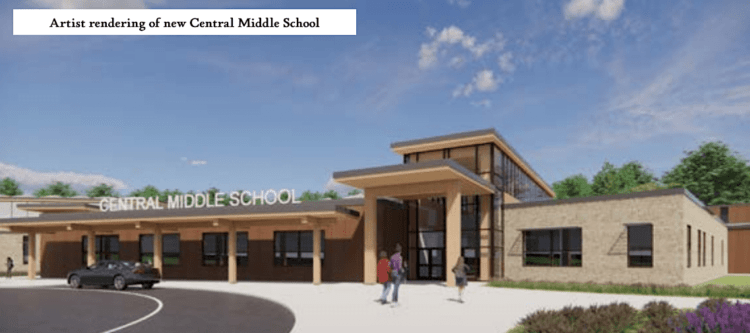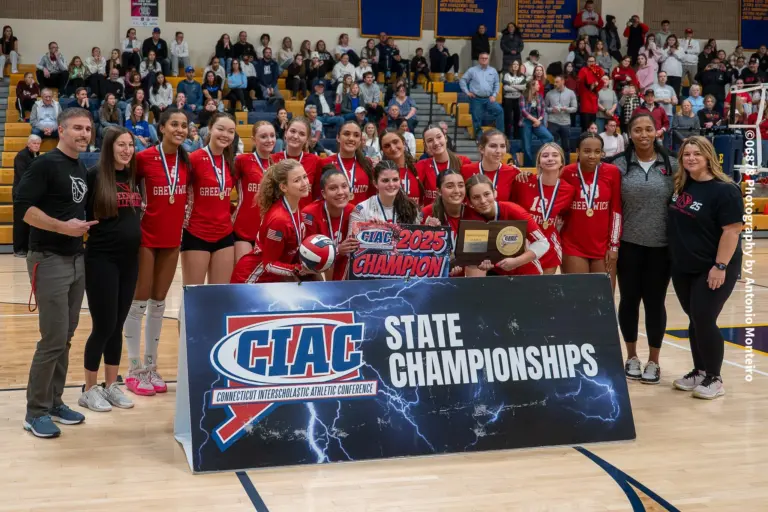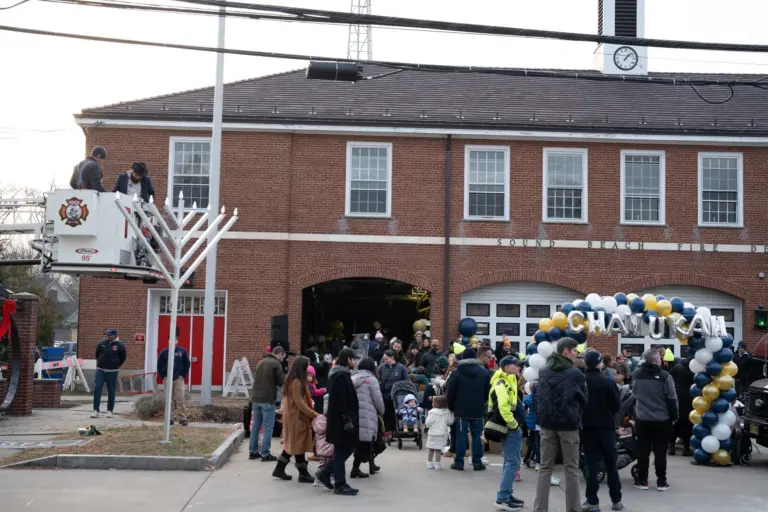It’s been less than two years since the emergency closure of Central Middle School due to structural problems. Despite challenges, last night marked a pivotal moment in the CMS narrative. The Greenwich finance board, the Board of Estimate and Taxation (BET), gave its nod to fund the project, underscoring the community’s consensus to prioritize education.
In what, for a government body, could easily be termed lightning speed, the BET convened a special meeting to review and approve the final plan for the Central Middle School building project. The school had been awarded its Municipal Improvement (MI) status just last Tuesday after BET member Leslie Tarkington said early last month that the CMSBC needed to refocus their efforts on moving through the established process to get official MI status.
Tony Turner, Chairman of the CMSBC, said that the committee requested a special BET meeting within an hour of receiving MI status for the project.
Dan Ozizmir, Chairma n of the BET, congratulated the building committee and immediately began work on getting a special meeting of the full BET called. “Congratulations to the board and building committee for achieving MI.” Ozizmir said. “The building committee requested a special meeting, and I agreed to hold one. We’ll conduct it as soon as possible.”
The special BET meeting was held on Tuesday. The project passed the BET with a vote of 8-1-3 with 8 voting for, 1 against, and 3 abstentions.
Our conversations this week with the Chairman of the BET, the Chairman of the Building Committee, and the First Selectman took us back to 2020 and up through where things stand today.
“The truth is that this Republican-led BET has voted unanimously in favor of this project time after time for two years to move this project forward,” according to Ozizmir. “The fact that this wasn’t a unanimous vote reflects the complexity and the difficulty of making a choice between two imperfect solutions. I don’t think that what we have in front of us is something perfect, but there’s door A and B at this point. It really wasn’t an easy decision.”
The project is now poised to head to the RTM which also is calling a special meeting to review the project early next week.
“It’s not completely done, but it’s certainly looking positive for us,” said Turner, hinting at the upcoming RTM meeting following the finance vote from the BET.
Why the rush? The process with the state of Connecticut takes a very long time and is complicated. Also, members of the state legislature have indicated that they believe they can get a special waiver for state funding if approvals happened before the end of October.
The project’s hefty price tag, location, destruction of hundreds of trees, and overall capacity has caused concern in the community.
Turner acknowledged the difficulties saying, “Look, it’s been a very bumpy road. It’s been very hard for everyone, BET, building committee, Board of Education, and it’s just been very, very hard.”
“Could this be the turning point of let’s get positive, let’s join arms as a town and get back on track? I hope so,” expressed Turner with very real optimism.
We contacted Joe Kelly, Chairman of the Board of Education, who was out of town but said, “you could only imagine how pleased I am” and that he looks “forward to the RTM support of our project Monday night.”
Ozizmir and his fellow BET candidates had campaigned on getting CMS rebuilt, emphasizing it was their number one priority. While they were frustrated by an inability to really influence the plan itself, Ozizmir noted that requesting changes would have set back the process back too far.
Ozizmir said they first championed the CMS cause during the League of Women Voters Debate in 2021, criticizing the 2034 target date for CMS’s rebuild. In a letter dated February 2022, Ozizmir wrote an oped (see our reprint on the editorial page this week) about the urgent need for the rebuild of CMS in which he cited a master plan study conducted in 2018 that declared CMS the only school in need of replacement. Yet, the school’s renovation was prioritized by the former Board of Education and the Superintendent of Schools behind seven other school renovations as well as behind the Board of Education Administrative office building.
First Selectman Fred Camillo had also expressed his concern about the Board of Education capital plan. He told The Sentinel, “In 2020, when I was preparing my first budget, I asked why is [CMS] 2032? And then it got pushed back again, when we all knew, and everybody was talking about, how Central was the one school that needed to be completely razed.”
“There was a lot of criticism that the Republican BET wasn’t funding the Board of Education capital plan,” Ozizmir explained. “The reason the BET was not funding that plan is because it was a flawed plan. That plan had Central Middle School in 2034 and in fact it had the Havemeyer Administrative Building in 2026. That plan should not have been funded.” Ozizmir continued, “One of my main reasons for coming on the BET is we needed to break the log jam and get things going. In my view, the only way to fix this plan was to put Central Middle School first, take out the Havemeyer Administrative Building, and Fred [Camillo] is working on this Havemeyer project so that we don’t have to spend $30 million. We’d rather spend it on the kids and the students and that’s where this whole thing started.”
Camillo said he was “pleased to see CMS move up to 2026, and then ultimately, to number one this year.”
As of now, the BET will be funding approximately $340 million of capital over a three-year period, which is double any previous capital budget.
Camillo conveyed pride and gratitude towards those involved in the intricate process, saying, “I’m very proud of all of the people, and grateful to all the people, who have worked at this. It hasn’t been an easy process.”
The significance of the situation and the weight of the decisions made is not lost on any of the involved parties. In Ozizmir’s words, “The Republican BET promised 18 months ago that this would get done and we delivered.”
However, every journey has its challenges. The project moved forward without an initial feasibility study. While this decision was made to expedite the process, Turner acknowledged it as a lesson learned. He believes that despite the time saved, the absence of a feasibility study caused misinformation, emphasizing that such studies should be integral to future town projects even if they slow the process down six months.
The immense $112 million project’s progression in just two years from being a mere consideration for the next decade to nearing its realization is nothing short of extraordinary.





